Interventions for chronic kidney disease in people with sickle cell disease
- PMID: 37539955
- PMCID: PMC10404133
- DOI: 10.1002/14651858.CD012380.pub3
Interventions for chronic kidney disease in people with sickle cell disease
Abstract
Background: Sickle cell disease (SCD), one of the commonest severe monogenic disorders, is caused by the inheritance of two abnormal haemoglobin (beta-globin) genes. SCD can cause severe pain, significant end-organ damage, pulmonary complications, and premature death. Kidney disease is a frequent and potentially severe complication in people with SCD. Chronic kidney disease (CKD) is defined as abnormalities of kidney structure or function present for more than three months. Sickle cell nephropathy refers to the spectrum of kidney complications in SCD. Glomerular damage is a cause of microalbuminuria and can develop at an early age in children with SCD, with increased prevalence in adulthood. In people with sickle cell nephropathy, outcomes are poor as a result of the progression to proteinuria and chronic kidney insufficiency. Up to 12% of people who develop sickle cell nephropathy will develop end-stage renal disease. This is an update of a review first published in 2017.
Objectives: To assess the effectiveness of any intervention for preventing or reducing kidney complications or chronic kidney disease in people with sickle cell disease. Possible interventions include red blood cell transfusions, hydroxyurea, and angiotensin-converting enzyme inhibitors (ACEIs), either alone or in combination.
Search methods: We searched for relevant trials in the Cochrane Cystic Fibrosis and Genetic Disorders Group Trials Register, CENTRAL, MEDLINE, Embase, seven other databases, and two other trials registers.
Selection criteria: Randomised controlled trials (RCTs) comparing interventions to prevent or reduce kidney complications or CKD in people with SCD. We applied no restrictions related to outcomes examined, language, or publication status.
Data collection and analysis: Two review authors independently assessed trial eligibility, extracted data, assessed the risk of bias, and assessed the certainty of the evidence (GRADE).
Main results: We included three RCTs with 385 participants. We rated the certainty of the evidence as low to very low across different outcomes according to GRADE methodology, downgrading for risk of bias concerns, indirectness, and imprecision. Hydroxyurea versus placebo One RCT published in 2011 compared hydroxyurea to placebo in 193 children aged nine to 18 months. We are unsure if hydroxyurea compared to placebo reduces or prevents progression of kidney disease assessed by change in glomerular filtration rate (mean difference (MD) 0.58 mL/min /1.73 m2, 95% confidence interval (CI) -14.60 to 15.76; 142 participants; very low certainty). Hydroxyurea compared to placebo may improve the ability to concentrate urine (MD 42.23 mOsm/kg, 95% CI 12.14 to 72.32; 178 participants; low certainty), and may make little or no difference to SCD-related serious adverse events, including acute chest syndrome (risk ratio (RR) 0.39, 99% CI 0.13 to 1.16; 193 participants; low certainty), painful crisis (RR 0.68, 99% CI 0.45 to 1.02; 193 participants; low certainty); and hospitalisations (RR 0.83, 99% CI 0.68 to 1.01; 193 participants; low certainty). No deaths occurred in either trial arm and the RCT did not report quality of life. Angiotensin-converting enzyme inhibitors versus placebo One RCT published in 1998 compared an ACEI (captopril) to placebo in 22 adults with normal blood pressure and microalbuminuria. We are unsure if captopril compared to placebo reduces proteinuria (MD -49.00 mg/day, 95% CI -124.10 to 26.10; 22 participants; very low certainty). We are unsure if captopril reduces or prevents kidney disease as measured by creatinine clearance; the trial authors stated that creatinine clearance remained constant over six months in both groups, but provided no comparative data (very low certainty). The RCT did not report serious adverse events, all-cause mortality, or quality of life. Angiotensin-converting enzyme inhibitors versus vitamin C One RCT published in 2020 compared an ACEI (lisinopril) with vitamin C in 170 children aged one to 18 years with normal blood pressure and microalbuminuria. It reported no data we could analyse. We are unsure if lisinopril compared to vitamin C reduces proteinuria in this population: the large drop in microalbuminuria in both arms of the trial after only one month on treatment may have been due to an overestimation of microalbuminuria at baseline rather than a true effect. The RCT did not report serious adverse events, all-cause mortality, or quality of life.
Authors' conclusions: We are unsure if hydroxyurea improves glomerular filtration rate or reduces hyperfiltration in children aged nine to 18 months, but it may improve their ability to concentrate urine and may make little or no difference to the incidence of acute chest syndrome, painful crises, and hospitalisations. We are unsure if ACEI compared to placebo has any effect on preventing or reducing kidney complications in adults with normal blood pressure and microalbuminuria. We are unsure if ACEI compared to vitamin C has any effect on preventing or reducing kidney complications in children with normal blood pressure and microalbuminuria. No RCTs assessed red blood cell transfusions or any combined interventions to prevent or reduce kidney complications. Due to lack of evidence, we cannot comment on the management of children aged over 18 months or adults with any known genotype of SCD. We have identified a lack of adequately designed and powered studies, although we found four ongoing trials since the last version of this review. Only one ongoing trial addresses renal function as a primary outcome in the short term, but such interventions have long-term effects. Trials of hydroxyurea, ACEIs or red blood cell transfusion in older children and adults are urgently needed to determine any effect on prevention or reduction of kidney complications in people with SCD.
Copyright © 2023 The Cochrane Collaboration. Published by John Wiley & Sons, Ltd.
Conflict of interest statement
NR: none known AC: none known IDH: none known CD: none known LE: declares employment by NHS Blood and Transplant.
Figures
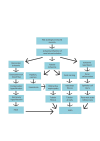
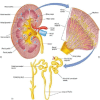
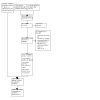


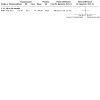
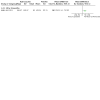
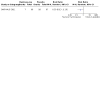
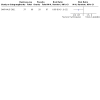
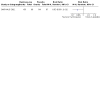
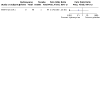
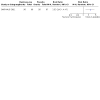

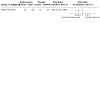
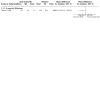

Update of
-
Interventions for chronic kidney disease in people with sickle cell disease.Cochrane Database Syst Rev. 2017 Jul 3;7(7):CD012380. doi: 10.1002/14651858.CD012380.pub2. Cochrane Database Syst Rev. 2017. Update in: Cochrane Database Syst Rev. 2023 Aug 4;8:CD012380. doi: 10.1002/14651858.CD012380.pub3. PMID: 28672087 Free PMC article. Updated.
References
References to studies included in this review
Aliu 2020 {published data only}
-
- Aliu R, Ocheke I, Jalo I, Obiagwu PN, Sani A. Effect of lisinopril on microalbuminuria in sickle cell anaemia children: a single-blind randomized controlled trial. International Journal of Pediatrics-Mashhad 2020;8(3):11013-22.
-
- TCTR20200227003. Effect of lisinopril on microalbuminuria in sickle cell anaemia children. trialsearch.who.int/Trial2.aspx?TrialID=TCTR20200227003 (first received 27 February 2020).
BABY HUG 2011 {published data only}
-
- Adams RJ, Barredo J, Bonds DR, Brown C, Casella J, Daner L, et al. TCD in infants: a report from the BABY HUG trial. Blood 2005;106(11):952. [ABSTRACT NO: 952] [CENTRAL: 593091] [CFGD REGISTER: SC180f]
-
- Adams RJ, Luden J, Miller S, Wang W, Rees R, Li D, et al. TCD in infants: a report from the Baby Hug study. In: 28th Annual Meeting of the National Sickle Cell Disease Program; 2005 April 9-13; Cincinnati, Ohio. 2005:105. [CENTRAL: 592981] [CFGD REGISTER: SC180a]
-
- Alvarez O, Miller ST, Wang WC, Luo Z, McCarville MB, Schwartz GJ, et al. Effect of hydroxyurea treatment on renal function parameters: results from the multi-center placebo-controlled BABY HUG clinical trial for infants with sickle cell anemia. Pediatric Blood & Cancer 2012;59(4):668-74. [CENTRAL: 848700] [CFGD REGISTER: SC180gg] [PMID: ] - PMC - PubMed
-
- Armstrong FD, Elkin TD, Brown RC, Glass P, Rees RC, Wang WC, et al. Neurodevelopment in infants with sickle cell anemia: baseline data from the Baby HUG trial. Blood 2008;112(11):713. [ABSTRACT NO: 713] [CENTRAL: 723732] [CFGD REGISTER: SC180p]
Foucan 1998 {published data only}
-
- Foucan L, Bourhis V, Bangou J, Merault L, Etienne-Julan M, Salmi RL. A randomized trial of captopril for microalbuminuria in normotensive adults with sickle cell anemia. American Journal of Medicine 1998;104(4):339-42. [CFGD REGISTER: SC34] - PubMed
References to studies excluded from this review
Ataga 2019 (ENDO) {published data only}
-
- Ataga KI, Wichlan D, Elsherif L, Derebail VK, Wogu AF, Maitra P, et al. A pilot study of the effect of atorvastatin on endothelial function and albuminuria in sickle cell disease. American Journal of Hematology 2019;94(11):E299-301. [CENTRAL: CN-02005431] [CFGD REGISTER: SC390] [EMBASE: 2002542331] [PMID: ] - PubMed
-
- NCT01732718. Effect of Atorvastatin on Endothelial Dysfunction and Albuminuria in Sickle Cell Disease (ENDO). clinicaltrials.gov/ct2/show/NCT01732718 (first received 9 November 2012).
Ataga 2021 (HIBISCUS) {published data only}
-
- Ataga K, Wood K, Geib J, Wu E, Berlin J, Webster I, et al. Hibiscus, an adaptive, randomized, placebo-controlled, double-blind, multicenter study of oral ft-4202, a pyruvate kinase activator in patients with sickle cell disease. HemaSphere 2021;5(Suppl 2):831.
-
- NCT04624659. A study of etavopivat in adults and adolescents with sickle cell disease (HIBISCUS). clinicaltrials.gov/ct2/show/NCT04624659 (first received 5 November 2020).
-
- Wood K, Geib J, Wu E, Berlin J, Webster I, Ataga K, et al. Hibiscus, an adaptive, randomized, placebo-controlled, double-blind, multi-centre study of oral FT-4202, a pyruvate kinase activator in patients with sickle cell disease. British Journal of Haematology 2021;193(Suppl 1):31-2.
Choi 2016 {published data only}
-
- Choi J, Singh N, Han J, Gowhari M, Hassan J, Jain S, et al. Effect of angiotensin converting enzyme inhibitors and angiotensin receptor blockers on kidney function in patients with sickle cell disease. Blood 2016;128(22):3666. [DOI: 10.1182/blood.V128.22.3666.3666] - DOI
Estcourt 2016 {published data only}
George 2020 {published data only}
-
- George A, Aygun B, Mortier N, Sparreboom A, Ware R. A randomized controlled trial of a dose-prediction equation to determine maximum tolerated dose of hydroxyurea in children with sickle cell anemia. Pediatric Blood & Cancer 2013;60(Suppl):S32. [CFGD REGISTER: SC283b]
-
- George A, Dinu B, Estrada N, Minard C, Hurwitz RL, Mahoney D, et al. NDEPTH: a randomized controlled trial of a novel dose-prediction equation to determine maximum tolerated dose for hydroxyurea therapy in pediatric patients with sickle cell anemia. Blood 2019;134:2267. [CFGD REGISTER: SC283c] - PubMed
-
- George A, Dinu B, Estrada N, Minard CG, Hurwitz R, Mahoney DH, et al. Novel dose escalation to predict treatment with hydroxyurea (NDEPTH): a randomized controlled trial of a dose-prediction equation to determine maximum tolerated dose of hydroxyurea in pediatric sickle cell disease. American Journal of Hematology 2020;95(9):E242-4. [CFGD REGISTER: SC283d] [DOI: 10.1002/ajh.25883] [PMID: ] - DOI - PubMed
-
- George A, Dinu BR, Ware RE. Ndepth: novel dose escalation to predict treatment with hydroxyurea. Blood 2015;126(23):3419. [CFGD REGISTER: SC283a]
-
- NCT02042222. Novel dose escalation to predict treatment with hydroxyurea. clinicaltrials.gov/ct2/show/NCT02042222 (first posted 20 January 2014).
Jain 2012 {published data only}
-
- Jain D. Low dose hydroxyurea in children severely affected with sickle cell disease: hospital based randomized controlled study. American Journal of Hematology 2010;85(8):E42. [CFGD REGISTER: SC211a]
-
- Jain D. Low dose hydroxyurea in children severely affected with sickle cell disease: hospital based randomized controlled study. In: 4th Annual Sickle Cell Disease Research and Educational Symposium & Grant Writing Institute AND Annual Sickle Cell Disease Scientific Meeting; 2010 Feb 14-19; Hollywood, Florida. 2010:52, Abstract no: 076. [CFGD REGISTER: SC211b]
-
- Jain DL, Sarathi V, Desai S, Bhatnagar M, Lodha A. Low fixed-dose hydroxyurea in severely affected Indian children with sickle cell disease. Hemoglobin 2012;36(4):323-32. [FGD REGISTER: SC211c] - PubMed
Laurin 2014 {published data only}
NCT01096121 (MADREPIEC) {published data only}
-
- NCT01096121. Angiotensin-converting enzyme Inhibitors and early sickle cell renal disease in children (MADREPIEC). clinicaltrials.gov/ct2/show/record/NCT01096121 (first posted 29 March 2010). [CFGD REGISTER: SC427]
NCT01195818 (RAND) {unpublished data only}
-
- NCT01195818. Albuminuria reduction with renin angiotensin system inhibitors in SCA patients (RAND). clinicaltrials.gov/ct2/show/NCT01195818 (first posted 3 September 2010).
NCT01891292 {published data only}
-
- NCT01891292. Efficacy of antioxidant therapy compared with enalapril in sickle nephropathy. clinicaltrials.gov/ct2/show/NCT01891292 (first posted 22 January 2013). [CFGD REGISTER: SC428]
NCT01989078 (SCD‐Losaratan) {published data only}
-
- NCT01989078. Losartan for sickle cell kidney disease (SCD-Losartan). clinicaltrials.gov/ct2/show/NCT01989078 (first received 26 February 2013).
NCT02286154 (TREAT) {published data only}
-
- NCT02286154. Therapeutic response evaluation and adherence trial (TREAT). clinicaltrials.gov/ct2/show/NCT02286154 (first posted 1 October 2014).
NCT02373241 {published data only}
-
- NCT02373241. Preventing sickle cell kidney disease [Chronobiology and chronopharmacology to prevent sickle cell kidney disease]. clinicaltrials.gov/ct2/show/NCT02373241 (first posted 5 February 2015). [CFGD REGISTER: SC463]
NCT02522104 (DARH) {published data only}
-
- NCT02522104. Evaluation of the impact of renal function on the pharmacokinetics of SIKLOS ® (DARH). clinicaltrials.gov/ct2/show/NCT02522104 (first posted 4 August 2015).
Quinn 2017 {published data only}
-
- NCT01479439. Losartan to reverse sickle nephropathy. clinicaltrials.gov/ct2/show/NCT01479439 (first received 16 November 2011).
-
- Quinn C, Saraf S, Gordeuk V, Fitzhugh C, Creary S, Bodas P, et al. A multi-center, phase-2 trial of losartan for the nephropathy of sickle cell anemia. Pediatric Blood & Cancer 2016;63:S13.
Silva Junior 2014 {published data only}
-
- Silva Junior GB, Vieira AP, Couto Bem AX, Alves MP, Meneses GC, Martins AM, et al. Proteinuria in adults with sickle-cell disease: the role of hydroxycarbamide (hydroxyurea) as a protective agent. International Journal of Clinical Pharmacy 2014;36(4):766-70. - PubMed
Steinberg 2003 {published data only}
-
- Steinberg MH, Barton F, Castro, Pegelow CH, Ballas SK, Kutlar A, et al. Effect of hydroxyurea on mortality and Morbidity in adult sickle cell anemia: risks and benefits up to 9 years of treatment. JAMA 2003;289(13):1645-51. - PubMed
Wood 2020 (PRAISE) {published data only}
-
- Wood KW, Geib J, Wu E, Berlin J, Webster I, Ataga KI, Howard J, et al. An adaptive, randomized, placebo-controlled, double-blind, multi-center study of oral FT-4202, a pyruvate kinase activator in patients with sickle cell disease (PRAISE). Blood 2020;136(Suppl 1):19-20.
References to studies awaiting assessment
NCT05392894 (REDRESS) {published data only}
-
- NCT05392894. Related haplo-donor haematopoietic stem cell transplantation for adults with severe sickle cell disease (REDRESS). clinicaltrials.gov/ct2/show/NCT05392894 (first received 23 May 2022).
References to ongoing studies
Ataga 2019 (STEADFAST) {published data only}
-
- Ataga KI, Saraf SL, Derebail VK, Sharpe CC, Inati A, Lebensburger JD, et al. The effect of crizanlizumab plus standard of care (SoC) versus soc alone on renal function in patients with sickle cell disease and chronic kidney disease: a randomized, multicenter, open-label, phase II study (STEADFAST). Blood 2019;134(Suppl 1):1018. [CENTRAL: CN-02050662] [CFGD REGISTER: SC391a] [DOI: 10.1182/blood-2019-124823] [EMBASE: 630319168] - DOI
-
- Bartolucci P, Saraf SL, Derebail VK, Sharpe CC, Inati A, Lebensburger JD, et al. STEADFAST: a phase II study investigating the effect of crizanlizumab and standard of care (SOC) vs SOC alone on renal function in patients with chronic kidney disease due to sickle cell nephropathy. HemaSphere 2020;4(Suppl 1):1055. [CFGD REGISTER: SC391c]
-
- EUCTR2018-003608-38-GR. Study exploring the effect of crizanlizumab on kidney function in patients with chronic kidney disease caused by sickle cell disease [A Phase II, multicenter, randomized, open label two arm study comparing the effect of crizanlizumab + standard of care to standard of care alone on renal function in sickle cell disease patients = 16 years with chronic kidney disease due to sickle cell nephropathy (STEADFAST)]. www.who.int/trialsearch/Trial2.aspx?TrialID=EUCTR2018-003608-38-GR 2019. [CENTRAL: CN-02068279] [CFGD REGISTER: SC391b]
-
- LBCTR2020094586. A phase II, multicenter, randomized, open label two arm study comparing the effect of crizanlizumab + standard of care to standard of care alone on renal function in sickle cell disease patients = 16 years with chronic kidney disease due to sickle cell nephropathy. trialsearch.who.int/Trial2.aspx?TrialID=LBCTR2020094586 (first received 24 May 2021).
-
- NCT04053764. Study exploring the effect of crizanlizumab on kidney function in patients with chronic kidney disease caused by sickle cell disease (STEADFAST). clinicaltrials.gov/ct2/show/NCT04053764 (first posted 9 August 2019). [CFGD REGISTER: SC391e]
EUCTR2019‐004471‐39‐GB {published data only}
-
- EUCTR2019-004471-39. A phase 2b study to evaluate the safety and efficacy of IMR-687 in subjects with sickle cell disease. www.clinicaltrialsregister.eu/ctr-search/trial/2019-004471-39/results (first received 23 July 2022).
Kutlar 2019 {published data only}
-
- Kutlar A, Pollock J, Meiler SE, Harris R, Hongyan X, Wells L, et al. Phase-I study of ETA receptor antagonist ambrisentan in sickle cell disease. Blood 2019;134(Suppl 1):617.
-
- NCT02712346. The role of endothelin-1 in sickle cell disease. clinicaltrials.gov/ct2/show/results/NCT02712346 (first received 2 October 2015).
NCT03806452 (SIKAMIC) {unpublished data only}
-
- NCT03806452. SIKAMIC (SIklos on Kidney Function and AlbuMInuria Clinical Trial) (SIKAMIC). clinicaltrials.gov/ct2/show/NCT03806452 (first posted 9 January 2019). [CFGD REGISTER: SC433]
-
- PACTR202103526168929. Multicentre randomized double-blind placebo-controlled study to evaluate the effect on albuminuria of 6 months treatment with hydroxycarbamide (Siklos®) or a placebo in adults with sickle cell disease:SIKAMIC (SIklos on Kidney function and AlbuMInuria Clinical trial). trialsearch.who.int/Trial2.aspx?TrialID=PACTR202103526168929 (first received 28 January 2021).
NCT03814746 (STAND) {published data only}
-
- EUCTR 2017-001746-10. A phase III, multicenter, randomized, double-blind study to assess efficacy and safety of two doses of crizanlizumab versus placebo, with or without hydroxyurea/hydroxycarbamide therapy, in adolescent and adult sickle cell disease patients with vaso-occlusive crises (STAND). clinicaltrialsregister.eu/ctr-search/trial/2017-001746-10/NL (first posted 23 April 2019).
-
- NCT03814746. Study of two doses of crizanlizumab versus placebo in adolescent and adult sickle cell disease patients (STAND). clinicaltrials.gov/ct2/show/NCT03814746 (first posted 21 January 2019). [CFGD REGISTER: SC392]
NCT04084080 (SCD‐CARRE) {published data only}
-
- NCT04084080. Sickle cell disease and cardiovascular risk – red cell exchange trial (SCD-CARRE). clinicaltrials.gov/ct2/show/NCT04084080 (first posted 26 August 2019).
NCT04335721 {published data only}
-
- NCT04335721. A voxelotor for sickle cell anemia patients at highest risk for progression of chronic kidney disease. clinicaltrials.gov/ct2/show/NCT04335721 (first received 2 April 2020).
Additional references
Adam 2008
Akinsheye 2011
Alvarez 2006
-
- Alvarez O, Montane B, Lopez G, Wilkinson J, Miller T. Early blood transfusions protect against microalbuminuria in children with sickle cell disease. Pediatric Blood & Cancer 2006;47:71-6. - PubMed
Alvarez 2012
-
- Alvarez O, Miller ST, Wang WC, Luo Z, McCarville MB, Schwartz GJ, et al. Effect of hydroxyurea treatment on renal function parameters: results from the multi-center placebo-controlled BABY HUG clinical trial for infants with sickle cell anemia. Pediatric Blood & Cancer 2012;59(4):668-74. - PMC - PubMed
Arlet 2012
-
- Arlet JB, Ribeil JA, Chatellier G, Eladari D, De Seigneux S, Souberbielle JC, et al. Determination of the best method to estimate glomerular filtration rate from serum creatinine in adult patients with sickle cell disease: a prospective observational cohort study. BMC Nephrology 2012;13:83. - PMC - PubMed
Asnani 2013
Asnani 2015
-
- Asnani MR, Reid ME. Renal function in adult Jamaicans with homozygous sickle cell disease. Hematology 2015;20(7):422-8. - PubMed
Astor 2011
-
- Astor BC, Matsushita K, Gansevoort RT, Velde M, Woodward M, Levey AS et al. Lower estimated glomerular filtration rate and higher albuminuria are associated with mortality and end-stage renal disease. A collaborative meta-analysis of kidney disease population cohorts. Kidney International 2011;79(12):1331-40. - PMC - PubMed
Ataga 2014
Aygun 2013
Botev 2009
-
- Botev R, Mallié JP, Couchoud C, Schuck O, Fauvel JP, Wetzels JFM, et al. Estimating glomerular filtration rate: Cockcroft–Gault and Modification of Diet in Renal Disease formulas compared to renal inulin clearance. Clinical Journal of the American Society of Nephrology 2009;4(5):899-906. - PMC - PubMed
Boyle 2016
-
- Boyle SM, Jacobs B, Sayani FA, Hoffman B. Management of the dialysis patient with sickle cell disease. Seminars in Dialysis 2016;29(1):62-70. - PubMed
Brun 2003
-
- Brun M, Bourdoulous S, Couraud PO, Elion J, Krishnamoorthy R, Lapoumeroulie C. Hydroxyurea down regulates endothelin-1 gene expression and up regulates ICAM-1 gene expression in cultured human endothelial cells. Pharmacogenomics Journal 2003;3(4):215-26. - PubMed
CDC 2022
-
- Center for Disease Control and Prevention. Data & Statistics on Sickle Cell Disease. www.cdc.gov/ncbddd/sicklecell/data.html (accessed 6 June 2023).
Charache 1995
-
- Charache S, Terrin ML, Moore RD, Dover GJ, Barton FB, Eckert SV, et al. Effect of hydroxyurea on the frequency of painful crises in sickle cell anemia. New England Journal of Medicine 1995;332(20):1317-22. - PubMed
Chou 2013a
-
- Chou ST. Transfusion therapy for sickle cell disease: a balancing act. Hematology / the Education Program of the American Society of Hematology 2013;2013(1):439-46. - PubMed
Chou 2013b
-
- Chou ST, Jackson T, Vege S, Smith-Whitley K, Friedman DF, Whesthoff CM. High prevalence of red blood cell alloimmunization in sickle cell disease despite transfusion from Rh-matched minority donors. Blood 2013;122(6):1062-71. - PubMed
Covidence [Computer program]
-
- Covidence systematic review software. Version accessed 20 January 2023. Melbourne, Australia: Veritas Health Innovation. Available at www.covidence.org.
de Zeeuw 2004
-
- Zeeuw D. Albuminuria, not only a cardiovascular/renal risk marker, but also a target for treatment? Kidney International. Supplement 2004;92:S2-6. - PubMed
Deeks 2022
-
- Deeks JJ, Higgins JP, Altman DG, editor(s). Chapter 10: Analysing data and undertaking meta-analyses. In: Higgins JP, Thomas J, Chandler J, Cumpston M, Li T, Page MJ, Welch VA, editor(s). Cochrane Handbook for Systematic Reviews of Interventions version 6.3 (updated February 2022). Cochrane, 2022. Available from www.training.cochrane.org/handbook.
Field 2014
Frenette 2007
Gansevoort 1995
-
- Gansevoort RT, Sluiter WJ, Hemmelder MH, Zeeuw D, Jong PE. Antiproteinuric effect of blood-pressure-lowering agents: a meta-analysis of comparative trials. Nephrology, Dialysis, Transplantation 1995;10(11):1963-74. - PubMed
Gaspari 2006
-
- Gaspari F, Perico N, Remuzzi G. Timed urine collections are not needed to measure urine protein excretion in clinical practice. American Journal of Kidney Diseases 2006;47(1):1-7. - PubMed
Gosmanova 2014
-
- Gosmanova EO, Zaidi S, Wan JY, Adams-Graves PE. Prevalence and progression of chronic kidney disease in adult patients with sickle cell disease. Journal of Investigative Medicine 2014;62(5):804-7. - PubMed
Gravitz 2014
-
- Gravitz L, Pincock S. Sickle-cell disease. Nature 2014;515(7526):S1. - PubMed
Grosse 2011
Hamideh 2013
-
- Hamideh D, Alvarez O. Sickle cell disease related mortality in the United States (1999–2009). Blood Cancer 2013;60(9):1482-86. - PubMed
Haymann 2010
Hebbel 2014
-
- Hebbel RP. Ischemia-reperfusion injury in sickle cell anemia: relationship to acute chest syndrome, endothelial dysfunction, arterial vasculopathy, and inflammatory pain. Hematology/Oncology Clinics of North America 2014;28(2):181-98. - PubMed
Higgins 2017
-
- Higgins JP, Altman DG, Sterne JA, editor(s). Chapter 8: Assessing risk of bias in included studies. In: Higgins JP, Churchill R, Chandler J, Cumpston MS, editor(s), Cochrane Handbook for Systematic Reviews of Interventions version 5.2.0 (updated June 2017). Cochrane, 2017. Available from www.training.cochrane.org/handbook/PDF/v5.2/.
Higgins 2022
-
- Higgins JP, Eldridge S, Li T, editor(s). Chapter 23: Including variants on randomized trials. In: Higgins JP, Thomas J, Chandler J, Cumpston M, Li T, Page MJ, Welch VA, editor(s). Cochrane Handbook for Systematic Reviews of Interventions version 6.3 (updated February 2022). Cochrane, 2022. Available from www.training.cochrane.org/handbook.
Hillery 2000
-
- Hillery CA, Du MC, Wang WC, Scott JP. Hydroxyurea therapy decreases the in vitro adhesion of sickle erythrocytes to thrombospondin and laminin. British Journal of Haematology 2000;109(2):322-7. - PubMed
Howard 2015
-
- Howard J, Hart N, Roberts-Harewood M, Cummins M, Awogbade M, Davis B. Guideline on the management of acute chest syndrome in sickle cell disease. British Journal of Haematology 2015;169(4):492-505. - PubMed
Kato 2006a
Kato 2006b
KDIGO 2012
-
- National Kidney Foundation. KDIGO 2012 Clinical practice guideline for the evaluation and management of chronic kidney disease. Kidney International Supplements 2013;3(1):1-163. - PubMed
Lebensburger 2011
-
- Lebensburger J, Johnson SM, Askenazi DJ, Rozario NL, Howard TH, Hilliard LM. Protective role of hemoglobin and fetal hemoglobin in early kidney disease for children with sickle cell anemia. American Journal of Hematology 2011;86(5):430-2. - PubMed
Lefebvre 2011
-
- Lefebvre C, Manheimer E, Glanville J. Chapter 6: Searching for studies. In: Higgins JP, Green S, editor(s). Cochrane Handbook for Systematic Reviews of Interventions Version 5.1.0 (updated March 2011). The Cochrane Collaboration, 2011. Available from handbook.cochrane.org/archive/v5.1.
Lefebvre 2022
-
- Lefebvre C, Glanville J, Briscoe S, Featherstone R, Littlewood A, Marshall C, et al. Chapter 4: Searching for and selecting studies. In: Higgins JP, Thomas J, Chandler J, Cumpston M, Li T, Page MJ, Welch VA, editor(s). Cochrane Handbook for Systematic Reviews of Interventions Version 6.3 (updated February 2022). Cochrane, 2022. Available from www.training.cochrane.org/handbook.
Levey 1999
-
- Levey AS, Greene T, Beck GJ, Caggiula AW, Kusek JW, Hunsicker LG, et al. Dietary protein restriction and the progression of chronic renal disease: what have all of the results of the MDRD study shown? Modification of Diet in Renal Disease Study group. Journal of the American Society of Nephrology 1999;10(11):2426-39. - PubMed
Levey 2009
Lewis 1993
-
- Lewis EJ, Hunsicker LG, Bain RP, Rohde RD. The effect of angiotensin-converting-enzyme inhibition on diabetic nephropathy. The Collaborative Study Group. New England Journal of Medicine 1993;329(20):1456-62. - PubMed
Li 2022
-
- Li T, Higgins JP, Deeks JJ, editor(s). Chapter 5: Collecting data. In: Higgins JP, Thomas J, Chandler J, Cumpston M, Li T, Page MJ, Welch VA, editor(s). Cochrane Handbook for Systematic Reviews of Interventions Version 6.3 (updated February 2022). Cochrane, 2022. Available from www.training.cochrane.org/handbook.
Macconi 2006
Maki 1995
-
- Maki DD, Ma JZ, Louis TA, Kasiske BL. Long-term effects of antihypertensive agents on proteinuria and renal function. Archives of Internal Medicine 1995;155(10):1073-80. - PubMed
Marsenic 2008
-
- Marsenic O, Couloures KG, Wiley JM. Proteinuria in children with sickle cell disease. Nephrology, Dialysis, Transplantation 2008;23(2):715-20. - PubMed
McKie 2007
-
- McKie KT, Hanevold CD, Hernandez C, Waller JL, Ortiz L, McKie KM. Prevalence, prevention, and treatment of microalbuminuria and proteinuria in children with sickle cell disease. Journal of Pediatric Hematology/Oncology 2007;29(3):140-4. - PubMed
Nasr 2006
-
- Nasr SH, Markowitz GS, Sentman RL, D'Agati VD. Sickle cell disease, nephrotic syndrome, and renal failure. Kidney International 2006;69(7):1276-80. - PubMed
Nath 2015
NICE 2021
-
- National Institute for Health and Care Excellence. Clinical knowledge summaries: sickle cell disease. cks.nice.org.uk/topics/sickle-cell-disease/background-information/preval... (accessed 6 June 2023).
Okafor 2013
Page 2021
Page 2022
-
- Page MJ, Higgins JP, Sterne JA. Chapter 13: Assessing risk of bias due to missing results in a synthesis. In: Higgins JP, Thomas J, Chandler J, Cumpston M, Li T, Page MJ, Welch VA, editor(s). Cochrane Handbook for Systematic Reviews of Interventions Version 6.3 (updated February 2022). Cochrane, 2022. Available from www.training.cochrane.org/handbook.
Parmar 1998
-
- Parmar M, Torri V, Stewart L. Extracting summary statistics to perform meta-analyses of the published literature for survival endpoints. Statistics in Medicine 1998;17(24):2815-34. - PubMed
Piel 2012
Pleasants 2014
-
- Pleasants S. Epidemiology: a moving target. Nature 2014;515(7526):S2-3. - PubMed
Porter 2013
Potoka 2015
Powars 2005
-
- Powars DR, Chan LS, Hiti A, Ramicone E, Johnson C. Outcome of sickle cell anemia: a 4-decade observational study of 1056 patients. Medicine 2005;84(6):363-76. - PubMed
Pule 2015
Rees 2010
-
- Rees DC, Williams TN, Gladwin MT. Sickle-cell disease. Lancet 2010;376(9757):2018-31. - PubMed
RevMan 2014 [Computer program]
-
- Review Manager (RevMan). Version 5.3. Copenhagen: Nordic Cochrane Centre, The Cochrane Collaboration, 2014.
Rumaney 2014
-
- Rumaney MB, Ngo Bitoungui VJ, Vorster AA, Ramesar R, Kengne AP, Ngogang J, et al. The co-inheritance of alpha-thalassemia and sickle cell anemia Is associated with better hematological indices and lower consultations rate in Cameroonian patients and could improve their survival. PLOS One 2014;9:e100516. - PMC - PubMed
Sandhu 2015
-
- Sandhu MK, Cohen A. Aging in sickle cell disease: co-morbidities and new issues in management. Hemoglobin 2015;39(4):221-4. - PubMed
Sasongko 2021
Scheunemann 2010
Schünemann 2022a
-
- Schünemann HJ, Higgins JP, Vist GE, Glasziou P, Akl EA, Skoetz N, et al. Chapter 14: Completing 'Summary of findings' tables and grading the certainty of the evidence. In: Higgins JP, Thomas J, Chandler J, Cumpston M, Li T, Page MJ, Welch VA, editor(s). Cochrane Handbook for Systematic Reviews of Interventions Version 6.3 (updated February 2022). Cochrane, 2022. Available from www.training.cochrane.org/handbook.
Schünemann 2022b
-
- Schünemann HJ, Vist GE, Higgins JP, Santesso N, Deeks JJ, Glasziou P, et al. Chapter 15: Interpreting results and drawing conclusions. In: Higgins JP, Thomas J, Chandler J, Cumpston M, Li T, Page MJ, Welch VA, editor(s). Cochrane Handbook for Systematic Reviews of Interventions Version 6.3 (updated February 2022). Cochrane, 2022. Available from www.training.cochrane.org/handbook.
Sealed Envelope [Computer program]
-
- Power calculator for binary outcome superiority trial. Version accessed 6 February 2017. Sealed Envelope Ltd, 2012. Available from www.sealedenvelope.com/power/binary-superiority.
Sharpe 2014
-
- Sharpe CC, Thein SL. How I treat renal complications in sickle cell disease. Blood 2014;123(24):3720-6. - PubMed
Sparkenbaugh 2013
Steinberg 2012
Styles 1997
-
- Styles LA, Lubin B, Vichinsky E, Lawrence S, Hua M, Test S, et al. Decrease of very late activation antigen-4 and CD36 on reticulocytes in sickle cell patients treated with hydroxyurea. Blood 1997;89(7):2554-9. - PubMed
Tierney 2007
Ubesie 2012
van der Meer 2010
Ventura 1985
-
- Ventura HO, Frohlich ED, Messerli FH, Kobrin I, Kardon MB. Cardiovascular effects and regional blood flow distribution associated with angiotensin converting enzyme inhibition (captopril) in essential hypertension. American Journal of Cardiology 1985;55(8):1023-6. - PubMed
Wang 2011
Yawn 2014
-
- Yawn BP, Buchanan GR, Afenyi-Annan AN, Ballas SK, Hassell KL, James AH, et al. Management of sickle cell disease: summary of the 2014 evidence-based report by expert panel members. JAMA 2014;312(10):1033-48. - PubMed
Yazdanbakhsh 2012
Yee 2011
Zafrani 2015
-
- Zafrani L, Ince C. Microcirculation in acute and chronic kidney diseases. American Journal of Kidney Diseases 2015;66(6):1083-94. - PubMed
Ziyadeh 2008
-
- Ziyadeh FN, Wolf G. Pathogenesis of the podocytopathy and proteinuria in diabetic glomerulopathy. Current Diabetes Reviews 2008;4(1):39-45. - PubMed
References to other published versions of this review
Roy 2016
Publication types
MeSH terms
Substances
LinkOut - more resources
Full Text Sources
Medical

